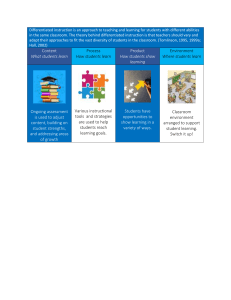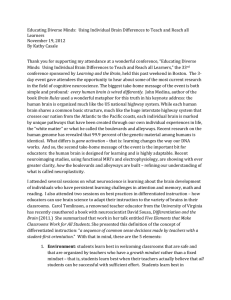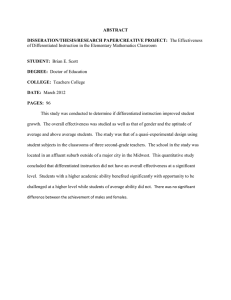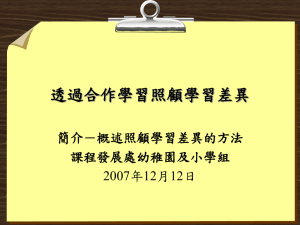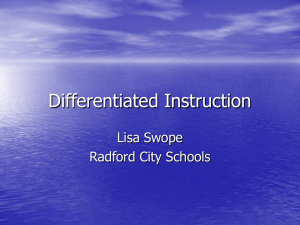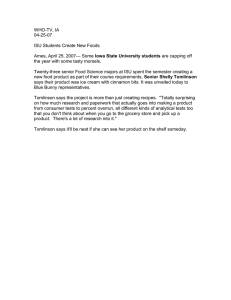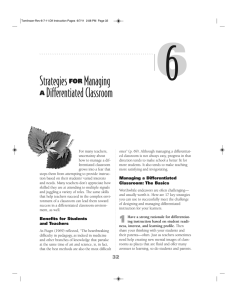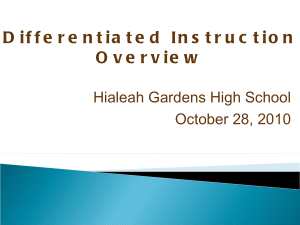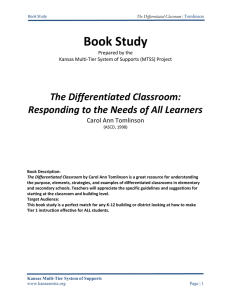THE KEYS TO UNLOCKING TEACHING AND LEARNING IN THE MIXED... CLASSROOM
advertisement
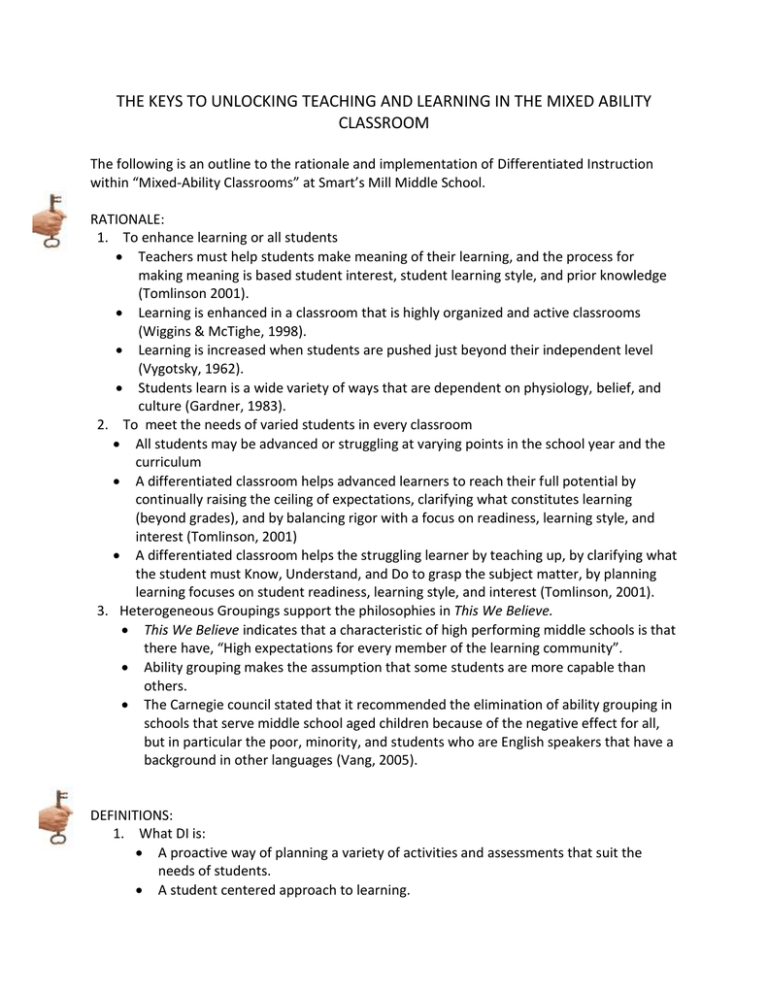
THE KEYS TO UNLOCKING TEACHING AND LEARNING IN THE MIXED ABILITY CLASSROOM The following is an outline to the rationale and implementation of Differentiated Instruction within “Mixed-Ability Classrooms” at Smart’s Mill Middle School. RATIONALE: 1. To enhance learning or all students Teachers must help students make meaning of their learning, and the process for making meaning is based student interest, student learning style, and prior knowledge (Tomlinson 2001). Learning is enhanced in a classroom that is highly organized and active classrooms (Wiggins & McTighe, 1998). Learning is increased when students are pushed just beyond their independent level (Vygotsky, 1962). Students learn is a wide variety of ways that are dependent on physiology, belief, and culture (Gardner, 1983). 2. To meet the needs of varied students in every classroom All students may be advanced or struggling at varying points in the school year and the curriculum A differentiated classroom helps advanced learners to reach their full potential by continually raising the ceiling of expectations, clarifying what constitutes learning (beyond grades), and by balancing rigor with a focus on readiness, learning style, and interest (Tomlinson, 2001) A differentiated classroom helps the struggling learner by teaching up, by clarifying what the student must Know, Understand, and Do to grasp the subject matter, by planning learning focuses on student readiness, learning style, and interest (Tomlinson, 2001). 3. Heterogeneous Groupings support the philosophies in This We Believe. This We Believe indicates that a characteristic of high performing middle schools is that there have, “High expectations for every member of the learning community”. Ability grouping makes the assumption that some students are more capable than others. The Carnegie council stated that it recommended the elimination of ability grouping in schools that serve middle school aged children because of the negative effect for all, but in particular the poor, minority, and students who are English speakers that have a background in other languages (Vang, 2005). DEFINITIONS: 1. What DI is: A proactive way of planning a variety of activities and assessments that suit the needs of students. A student centered approach to learning. A mixture of whole class, group, and individual instruction. A symbiotic environment where both teacher and student are learners. A qualitative approach to teaching excellence rather than a quantitative approach. In a differentiated classroom, the teacher proactively plans and carries out varied approaches to content, process, and product in anticipation of and response to student differences in readiness, interest, and learning needs.” (Tomlinson, 2001). 2. What Heterogeneous (Mixed Ability) classrooms are: IMPLEMENTATION: 1. Preparing teachers: Awareness: What differentiation is and what it isn’t. We will introduce the ideas to everyone through articles, videos, book study, and conferences. The focus will be on classroom environment, curriculum, assessment, quality instruction, and class room management. We will utilize VISION to post learning materials Experimental Trials: Teachers will be encouraged to experiment with the information they have learned in the 2011-2012 school year. Teachers will be supplied with a rubric and a design template to guide their journey (6 months). Implement with some regularity: During the 2012-2013 school year, sixth grade teachers will implement strategies continuing to utilize the design template and teacher rubric (1-3 years). Implement more consistently, with more attention to quality: Several years 2. Preparing students Identify useful tools to identify different learning styles and interests. Create tools to help students identify that each of them has strengths and weaknesses. Create lessons that teach students about the common vocabulary and structures in a differentiated classroom (i.e. anchor activities, process, product 3. Preparing parents. Bring parents into the school prior to the implementation (may 14 th is the first whole group meeting). Allow them to be heard. Identify the goal to DI is to give everyone the opportunity to grow and learn according to their personal strengths. Identify that we will be “Teaching Up”, that there will be an expansion of the “Honors” curriculum. We need to be on message that we will challenge everyone, and that challenge will be appropriate for each child. That our goal is to create better work for each child not just more or less.
